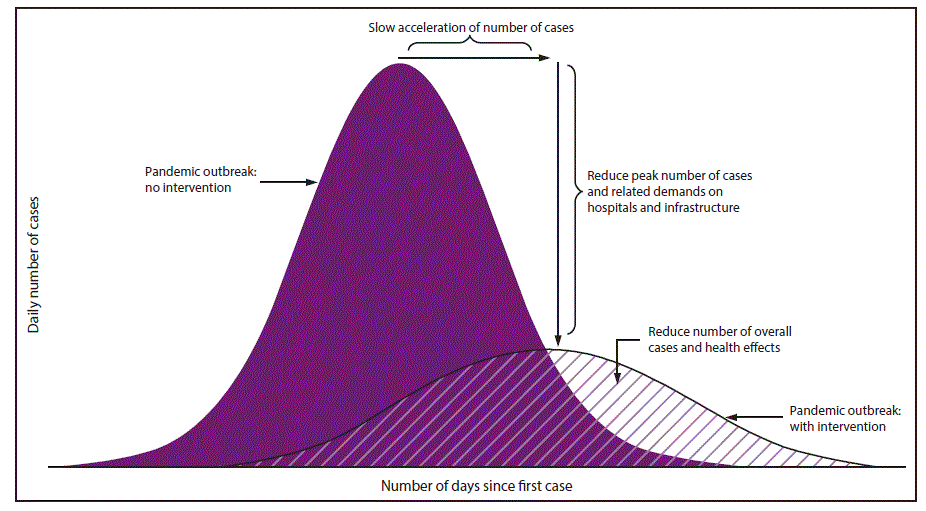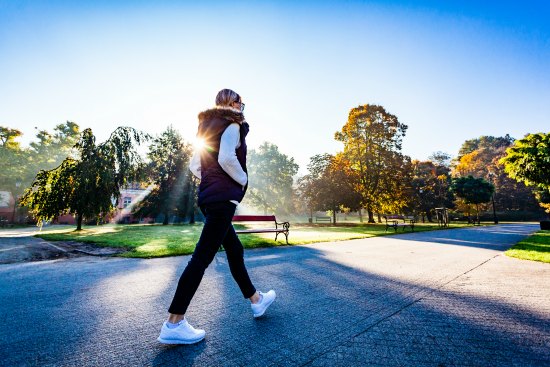In two months’ time, the world has become paralyzed with fears over a pandemic. This rapidly-evolving situation has only gone from bad to worse. Now health officials and governments are taking a more aggressive approach to stop the spread of the coronavirus. Many question why it is so critical at this point and what should we expect from this.
What is Social Distancing?
As we know, pandemic mitigation efforts are underway and one of the best ways to significantly lower cases is through widespread and comprehensive social distancing protocols. You may be hearing some words like isolation, quarantine and social distancing. Here are the differences:
- Isolation – You have tested positive for the virus and need to self-isolate in order to prevent the spread of the virus.
- Quarantine – You have been in contact with someone who has tested positive for the virus and are waiting to see if you develop symptoms.
- Social Distancing – Something everyone can do to reduce the risk of transmission.
In many areas of the country (and world), schools have been shut down, group gatherings are canceled and public events are being rescheduled in an effort to prevent communities and hospitals from being overwhelmed with more cases. While inconvenient as this is, as the image below details, this mitigation strategy is highly effective in controlling the spread of an already rapidly moving virus.

Source image: CDC
According to the CDC, social distancing measures that reduce opportunities for person-to-person virus transmission can help delay the spread and slow the exponential growth of a pandemic within communities. The optimal strategy is to implement these measures simultaneously in places where persons gather. This mitigation strategy is especially important before a pandemic vaccine becomes widely available. Since we don’t have antibodies to fight this pathogen, the best way we can prevent the spread of COVID-19 is by staying away from groups and those we interact with for a certain amount of time to ensure we are not carrying the virus.
It’s important to have the right attitude about social distancing because cases are increasing every day. Limiting your contact means you are preventing someone who has health issues or are in the at-risk group from coming in contact with this deadly contagion. Due to fears of hospital bed shortages, these measures will significantly help cut down on the possible influx of hospitalizations from COVID-19 cases.
Why This Week Could Be a Critical Turning Point
White House reporter, Tina Nguyen’s was talking to a researcher who studies public health at a major NGO (a nonprofit organization that operates independently of any government, typically one whose purpose is to address a social or political issue) on Twitter, and their conversation gave great insight into why this was THE WEEK to practice as much social distancing as possible, even if you don’t have to go to work. Below are excerpts that are taken from this informative conversation. You can read the full conversation here.
Why Is It So Critical Now For Social Distancing?
This week is especially important because it has the highest number of contagious unidentified people and non-infected vulnerable people in the general population, at 2-3 contacts away from you. So it’s very easy to be the link between someone’s boss and someone’s grandma right now even if you only interact with young and healthy adults. In a week you’ll know who to avoid cause people will say oh this person I work with got sick. And in a week it will be literally everyone who didn’t isolate this week.
It’s time to start an isolation cell. Meaning that you isolate yourself and anyone in your home for a week or two. Then you can begin adding more people when interacting. Basically, in a week or two when you know exactly which of your friends have been isolated, you can begin to isolate together.
So for the people who go out this week and pick up the virus, what’s the timeline for them getting sick? Two weeks from now?
Yeah ten days or so and they’re contagious the whole time. The people they [sic] get sick are the ones who will die in 20 days. That’s the wave that overwhelms hospital capacity.
You Can Still Go Outside
Social distancing measures have been implemented across the globe but it does not mean you must self-quarantine in your home for months on end. Friends, we are not there yet!
If you are not in the at-risk group, you can still go out but will need to take precautions with large groups. For example, you can still grocery shop, but do so when where are not a lot of shoppers such as in the morning or late evening. Ensure you are able to keep your distance from other shoppers. If you are not showing signs of coronavirus, you can still go outside and take a walk – just ensure there is a distance between you and others. That said, take added measures of practicing personal nonpharmaceutical interventions (NPIs) to prevent the spread of germs.
Use Personal NPIs
Personal NPIs are everyday preventive actions, you can take to keep yourself and others from getting and spreading pandemic-potential diseases:
- No handshaking or high fives. Use a fish bump, light bow, or elbow bump.
- Use ONLY your knuckle to touch light switches, elevator buttons, etc. Lift the gasoline dispenser with a paper towel or use a disposable glove.
- Do not open doors with your hand, unless there is no other way to open to the door. Use a closed fist or hip if possible. As well, avoid handrails. Touching a handrail is like shaking hands with 10,000 people. If you have to, find a place to thoroughly wash your hand or use hand sanitizer as soon as possible. Another option is to wear disposable gloves in public places.
- If provided, use disinfectant wipes at stores. Wipe grocery carts down, especially the child seat.
- Wash your hands with soap for 20 seconds and/or use a greater than 60% alcohol-based hand sanitizer (see recipe above) whenever you return to your car, your home, or any activity that involves locations where other people have been. Tip: if you are at a restaurant, clean your hands after touching the menu and before you eat.
- Stop eating communal appetizers and foods like chips and dip.
- Keep hand sanitizer with you at the entrance to your home, in the car, in the bathroom, and even in the kitchen. It’s better to be safe than sorry.
- If possible, cough or sneeze into a disposable tissue and throw away immediately. Use your elbow only if you must. The clothing on you will contain an infectious virus that can be passed on for up to a week or more.
- Stop touching your eyes, nose, and mouth. Here’s a scary fact, we touch our face over 90 times a day. During a pandemic scare, this is playing a game of Russian roulette with your immune system. We all know that we touch our faces constantly and kids do it even more. Being conscious of this and trying to avoid doing it during the flu season can cut down virus transmission significantly. If you have to, wear a disposable facemask for a week and train yourself to stop touching your face.
- Stay away from highly trafficked areas if you can. The more people you come in contact with the greater the chance of you contracting a deadly contagion.
If you are in an at-risk group, self-quarantining in the home is highly advised. Try to stay inside as much as possible and limit your interaction with others outside of your “isolation cell.”
The CDC advises if you are at higher risk for serious illness from COVID-19 because of your age or because you have a serious long-term health problem, it is extra important for you to take action to reduce your risk of getting sick with the disease.
- Stock up on supplies.
- Take everyday precautions to keep space between yourself and others.
- When you go out in public, keep away from others who are sick, limit close contact and wash your hands often.
- Avoid crowds as much as possible.
- Avoid cruise travel and non-essential air travel.
- During a COVID-19 outbreak in your community, stay home as much as possible to further reduce your risk of being exposed.
- Avoid close contact with people who are sick.
Take everyday preventive actions:
- Clean your hands often
- Wash your hands often with soap and water for at least 20 seconds, especially after blowing your nose, coughing, or sneezing, or having been in a public place.
- If soap and water are not available, use a hand sanitizer that contains at least 60% alcohol.
- To the extent possible, avoid touching high-touch surfaces in public places – elevator buttons, door handles, handrails, handshaking with people, etc. Use a tissue or your sleeve to cover your hand or finger if you must touch something.
Wash your hands after touching surfaces in public places. - Avoid touching your face, nose, eyes, etc.
- Clean and disinfect your home to remove germs: practice routine cleaning of frequently touched surfaces (for example tables, doorknobs, light switches, handles, desks, toilets, faucets, sinks & cell phones)
- Avoid crowds, especially in poorly ventilated spaces. Your risk of exposure to respiratory viruses like COVID-19 may increase in crowded, closed-in settings with little air circulation if there are people in the crowd who are sick.
- Avoid all non-essential travel including plane trips, and especially avoid embarking on cruise ships.
Social Distancing Is Not a Vacation
This should be taken seriously. Traveling or going on vacation goes against social distancing measures. This behavior can further spread COVID-19 causing a continuation of COVID-19 to spread. It is paramount you stay home and isolate yourself in case you are contagious. It’s 12-14 days – we can do this!
While this sounds extreme, we must do what we can to control or limit the spread. With the right mitigation strategy, we can get through this but it is dependent on the actions you take today. Stay well!
Additional Reading:
8 Immediate Steps You Need to Take To Prevent the Spread of Germs in Your House
Tips For Getting Through A Quarantine With Children
10 Anti-Viral Foods To Add To Your Diet Today
When Should I Go Into a Full Pandemic Lockdown Mode And Self Quarantine?
This article was originally published at Ready Nutrition™ on March 15th, 2020







